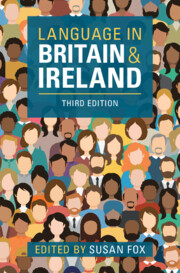Book contents
- Language in Britain and Ireland
- Language in Britain and Ireland
- Copyright page
- Contents
- Figures
- Tables
- Contributors
- Acknowledgements
- Map of Britain and Ireland
- Introduction
- Part I English
- Part II Multilingualism in Britain and Ireland: The Celtic Languages
- 10 The History of the Celtic Languages in Britain and Ireland
- 11 Scottish Gaelic
- 12 Irish Gaelic
- 13 Welsh
- 14 Cornish and Manx
- Part III Multilingualism in Britain and Ireland: Minority Languages
- Part IV Multilingualism: The Development of Urban Contact Varieties
- Part V Applied Sociolinguistic Issues
- Index
- References
10 - The History of the Celtic Languages in Britain and Ireland
from Part II - Multilingualism in Britain and Ireland: The Celtic Languages
Published online by Cambridge University Press: 17 October 2024
- Language in Britain and Ireland
- Language in Britain and Ireland
- Copyright page
- Contents
- Figures
- Tables
- Contributors
- Acknowledgements
- Map of Britain and Ireland
- Introduction
- Part I English
- Part II Multilingualism in Britain and Ireland: The Celtic Languages
- 10 The History of the Celtic Languages in Britain and Ireland
- 11 Scottish Gaelic
- 12 Irish Gaelic
- 13 Welsh
- 14 Cornish and Manx
- Part III Multilingualism in Britain and Ireland: Minority Languages
- Part IV Multilingualism: The Development of Urban Contact Varieties
- Part V Applied Sociolinguistic Issues
- Index
- References
Summary
This chapter provides an overview of the early history of the Celtic languages. The first part offers a tour of Britain and Ireland, pausing at key points, both historical and geographical, from which we may consider the development of the Celtic languages. The second part of the chapter then goes on to examine a number of features of the Celtic languages in greater detail: the stress accent, lenition and mutations, the loss of final syllables, and the verbal system.
Keywords
- Type
- Chapter
- Information
- Language in Britain and Ireland , pp. 269 - 287Publisher: Cambridge University PressPrint publication year: 2024

